Media | Articles
That’s emblematic: Badge engineering (sometimes) helps resale value
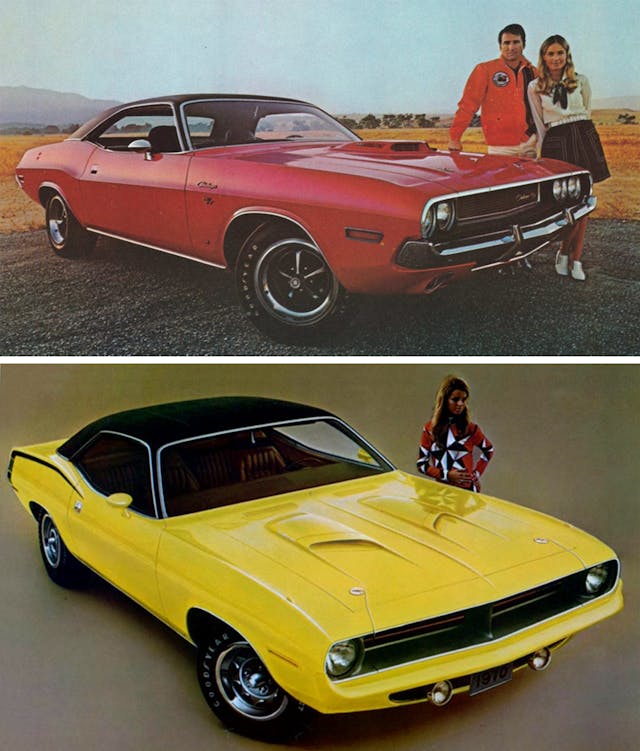
Badge engineering and platform sharing are dirty words in most automotive circles, but consider the benefits of these efficiencies and you might just relish their unintended consequences. Be it the unique-wheelbase Plymouth Barracuda or a BMW crossover atop a front-wheel-drive chassis for Mini, what happens in the market after such vehicles rolled off the dealership’s lot can’t be predicted. No matter, combining Hagerty’s valuation insights and readily-available used car data makes for a fun and illuminating ride. So let’s kick it off with something a little unexpected.
Jeep Patriot vs. Dodge Caliber
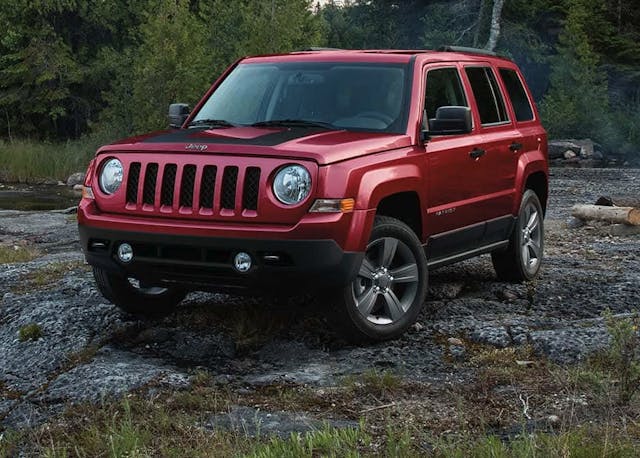
Jeep’s branding efforts over the last 20 years created a growing lineup with some less-than-Jeepish products that purists rightfully dislike. Jeep took the Dodge Caliber and made it into a Patriot compact crossover. It was universally disliked by enthusiasts, but this boxy little CUV got the last laugh: the used car market loves any Jeep.
According to online valuators*, a zero-option 2012 Patriot Sport with 80,000 miles is roughly $1500-3000 more than its Dodge Caliber SE cousin. Estimated transaction prices are under 8 grand for both models, which means you pay a minimum 20 percent price premium for a “fake” Jeep. Online used-car retailers (such as Cars.com or CarGurus) list Patriots for thousands more than the valuators estimate, which means the latter could be underestimating the delta between Dodge and Jeep: We need more Caliber SE’s on the market to verify, but its possible that a comparable Patriot Sport almost doubles the Dodge’s price!
There’s also an argument for the more expensive “Trail Rated” Patriots being more capable than any other “cute” utility, therefore adding cachet to all Patriots and in turn raising transaction prices. But seriously, at what point does paying 20-90 percent more for a Jeep grille/sheetmetal on a Dodge (with a Mitsubishi chassis and Hyundai-engineered engine) become pure marketing madness?
1967 Pontiac Firebird vs. Chevrolet Camaro

As you’d expect from a specialized brand, the Firebird pony car didn’t sell nearly as well as its Camaro cousin, but the plethora of noteworthy options means (depending on spec) prices are all over the map. To keep things fair, Hagerty valuation insights indicate base V-8 Firebird coupes commanding anywhere from few hundred to a couple thousand less than the equivalent Camaro.
Marketplace
Buy and sell classics with confidence
While Ram Air Firebirds or L78 Camaros can command significant premium to the right buyer at the right time, overall #2 condition (Excellent) values for both Firebirds and Camaros remain flat for the last three years on average. That said, Firebirds have increased marginally (1 to 2 percent) over the past five years, but that might not be enough to say this is a trend. If it happens, perhaps the more exclusive pony car could overcome its tragic lack of popularity relative to the almighty Camaro.
1967 Mercury Cougar vs. Ford Mustang

Like the Pontiac Firebird, new 1967 Cougars when new were a few hundred bucks more than their Mustang counterparts. And yet is anyone surprised that Mercury’s plusher offering is worth nearly $10,000 less than the equivalent V-8 Mustang coupe? Don’t even mention the Mustang fastback, which renders the kitty worth half of the pony.
Overall, base Mustang coupes and fastbacks are up 7-8 percent over the past three years, while base Cougars are up 1 percent over the same period. Cougar fans might have a bright future, however, as 19 percent of Hagerty’s (1967–69) Cougar insurance quotes come from millennials and 38 percent come from Gen-Xers, making them surprisingly popular among younger buyers. Perhaps, decades from now, the Mercury Cougar will be as valuable as a Mustang, albeit appealing to a smaller population of enthusiasts.
Lincoln Mark LT vs. Ford F-150 King Ranch

The Lincoln Mark LT was a badge-engineered Ford F-150 SuperCrew, normally retailing for more than Ford’s premium trim levels (Lariat, King Ranch, and Harley Davidson). Considering the negative feedback in the media at the time, you’d expect Mark LT values to drop like the (1995–2002) Lincoln Continental before it, but apparently Lincoln-Mercury dealers were correct in deducing that their truck died because Ford dealers didn’t want the competition.
Online valuators suggest Mark LTs are roughly $1000-2000 more valuable than an F-150 King Ranch. While we configured both as RWD SuperCrews with 5.5-foot beds, no options, and 100,000 miles for our search, online classifieds rarely permits you to specify that level of detail. Based on what’s for sale at the time of this writing, the Mark LT is indeed a couple grand more expensive, and low-mile examples are worth $5000 more than comparable King Ranches. Cynical badge engineering aside, it’s nice to see the market prove that “car” enthusiasts didn’t really understand the appeal of Lincoln’s star-crossed pickup.
Honda Passport vs. Isuzu Rodeo
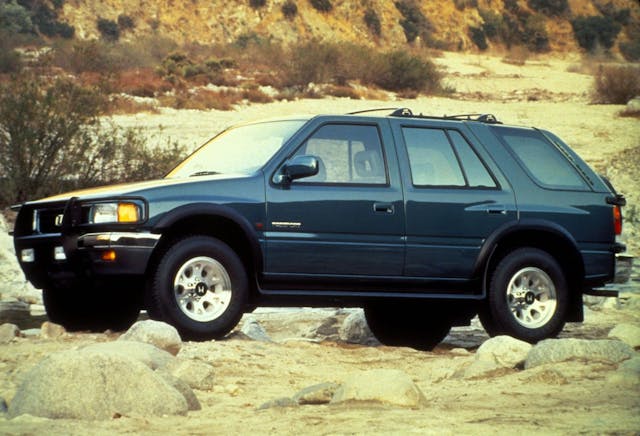
Hard to believe that Honda didn’t have the time or money to make its own SUV in the mid-’90s, but it was wise enough to badge engineer an Isuzu Rodeo for dealers dying to keep Accord loyalists from defecting to the Ford Explorer. Data for both Honda/Isuzu SUVs is sparse these days, but luckily one online valuator both remembers the Passport and suggested that minty-clean examples should retail for $600 more than a similar Rodeo. That’s a steep premium when you consider that transaction prices for both SUVs are around $3100, which translates to a 20 percent premium for a few Honda badges.
Online classifieds don’t reflect the same phenomenon, however. There’s only one Passport available for sale right now nationwide, and its $2995 asking price is right in line with the Rodeo. Perhaps the Honda badge has no effect when atop a crudely-engineered SUV, it’s “just” a work truck to buyers at this stage in its life!
Fiat 124 vs. Mazda MX-5 Miata

It’s tough to make the nut on affordable sports car production these days, but perhaps the Mazda/Fiat tie-up has been better-received than the Supra/Z4 project because different engines make them feel like different cars. While $250 extra bought you a Fiat 124 over the Miata, the 2017 Fiat 124 Classica now has an $800-$1000 price premium in the used market, according to a few different online search tools.
The online classifieds beg to differ: dealers want $2000 to $4500 extra for the Classica’s “Italian” roadster flavor. That’s a lot of scratch for continental flair! If some buyers are willing to pay for the Fiat, perhaps Miata isn’t the right answer for everyone.
1970 Plymouth Barracuda vs. Dodge Challenger

Unlike premium pony cars from GM and Ford, the Plymouth Barracuda is generally worth more than its Challenger cousin. A lot more. Even a base ‘Cuda coupe with a 318-cubic-inch V-8 is worth $10,000 more than a comparable Challenger! Add the 383 or 440 wedge motor and the difference expands to over $20,000, and adding the Challenger’s R/T trim level only cuts that premium in half. That’s some serious appreciation considering these E-body platform mates stickered for very similar prices when new.
Note that, unlike most cars, Mopars with brighter colors (and those cool names!) make a big difference in price. 1970 Challenger have remained largely flat over the past three years, but there have been drops for the larger-engined examples: Excellent-condition (#2) examples of Hemi hardtops are down 19 percent and 440 Six Pack convertibles are down 21 percent in that timeframe. Barracudas, however, are a mixed bag: Minor drops and minor gains over the past three years, although #2 values for the rare Hemi ‘Cudas dropped about a third over the past three years.

Dodge Charger R/T vs. Chrysler 300C
You hear more chatter about Dodge’s version of FCA’s famous LX platform after its 2011 and 2015 redesign, perhaps because Chrysler’s 300 became too bland while the sleeker Dodge also gained more hot-rod clout. No matter, spec a 2015 Chrysler 300C (Hemi) in black with 50,000 miles, zero options, and run it through online valuators: it’s roughly $4000 cheaper than the same bits in a Charger R/T, and one tool suggested the difference is over $5000!
While the Charger theoretically fends off depreciation after 5 years better than the 300, two things become clear while browsing online classified listings: finding a Chrysler 300 listed with a V-8 is challenging and Charger R/T’s are indeed worth several grand more. This difference makes even more sense after watching YouTube videos of all the Chargers at established car meets and Gen Z underground “sideshows” around the country. Just like the 1970 Barracuda, the market knows what it wants.
Dodge Stealth R/T Twin Turbo vs. Mitsubishi 3000 GT VR-4

Captive imports are usually a bland and utilitarian exercise for everyone involved, but the Dodge Stealth added spice to this bizarre genre. Sadly the market doesn’t appreciate this: Of the more desirable turbocharged coupes, the Dodge is $3000–$10,000 cheaper. This is especially evident with regard to the facelifted, more-powerful 1994–1997 Mitsubishi VR-4s. We’ve seen impressive auction results for the 3000 GT, which likely contributed to #2 values for VR-4s going up roughly 45 percent since January 2018. Turbo Stealths are up 37 percent for 1991–93 cars but just 13 percent for 1994–96 models over the same period.
It’s unfortunate that the Dodge isn’t succeeding like the Mitsubishi, but the Japanese classic sports car scene is currently only blossoming for the usual suspects (Toyota Supra, Acura NSX, Mazda RX-7, Nissan 300ZX Turbo) so even Mitsubishi isn’t reaching that rarified air. Our volume of insurance quotes for the 3000 GT are up 46 percent over the past three years, and 43 percent of quotes come from millennials (who, for context, make up 23 percent of the market as a whole). The number of Stealth quotes is up 30 percent over the past three years, and 33 percent of those came from millennials.
BMW X2 sDrive vs Mini Countryman Cooper S
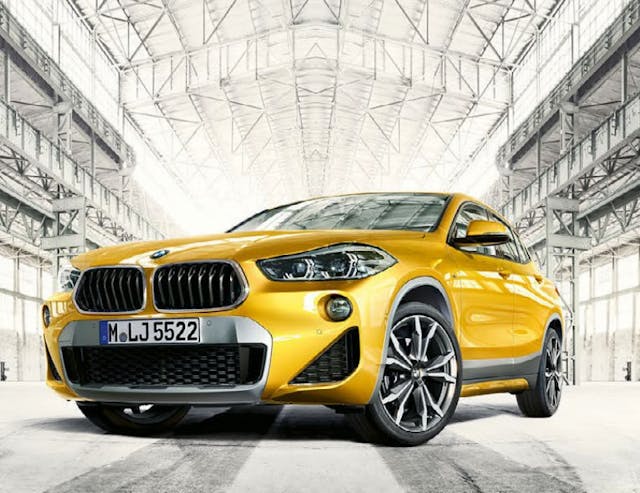
Thanks to ownership of the iconic Mini brand and the joys of platform sharing, front-wheel-drive BMW vehicles are indeed a reality. The BMW X2 (and its more utilitarian X1 cousin) and the Mini Countryman are two unique designs (with different engines) atop BMW’s front-wheel-drive, UKL platform. We chose the Countryman Cooper S because of the closer engine specs to the X2, and not surprisingly, the base X2 sDrive was priced $5000 more when new. Cheap BMWs aren’t always the darlings of resale value, especially in competition with the brand loyalty of Mini enthusiasts. Does the BMW advantage hold up as wrong-wheel-drive Bimmers depreciate?
Perhaps yes. Online valuators suggest $0-3000 more for the first (2018) year of the X2 versus the Countryman S. With the variables of Mini’s extensive customization in mind, the online classifieds bear out the same conclusions as we found with the valuation tools: Buy a BMW to impress people around you, or spend 3 grand less and join the cult of Mini.
Cadillac XLR vs. Chevrolet Corvette (C6) convertible
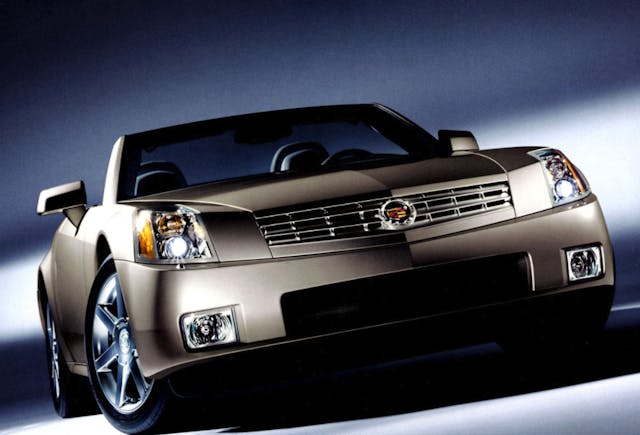
The going notion here is that the base XLR (not the supercharged V-series) will fare poorly against America’s sports car, considering how the 1967 Firebird trails the Camaro. Then again, the only way to get Cadillac’s XLR on par with the Corvette is to narrow the market down to convertibles with automatic transmissions, and the XLR has a better interior with a wicked power folding roof. Indeed, Hagerty’s valuation data shows a $3000 price premium in the XLR’s favor when in #1 (Concours) condition. Corvettes generally also take a 10 percent hit when saddled with an automatic. Who knew the Corvette could be de-throned by a Cadillac?
These cars are new enough to have data with used car retailers, so the online valuation tools suggest (using model year 2005) that the price difference is actually skewed in the Corvette’s favor. Even more contrary, the tools suggest that both are 30 percent cheaper than we price them (we think perfect examples are in the mid-low $30,000 range) but the values via online classifieds agree with us: dealerships advertise prices closer to our data, without giving the XLR a premium over the automatic Corvette.
VW Phaeton vs. Audi A8

Volkswagen Group regularly performs platform sharing antics aimed at different markets and budgets, especially outside of North America. With historically mixed reviews, a short production run, and a base price only $5000 cheaper than its Audi A8 sibling, the flagship Phaeton shakes things up as a used car: Spec both luxury sedan flagships from 2006 with standard V-8 engines, short wheelbase, no options (good luck with that in the real world) and the valuators favor the Phaeton to the tune of $1000–$2000. That’s not chump change, especially since retail prices are now well under 20 grand.
The online classifieds tell a different story, as most examples cost thousands more in the case of both brands, with the VW’s price superiority not definitively set in stone. Perhaps in the future the A8 will be just another German flagship that’s a nightmare to keep running, while the Phaeton could have the retro cachet that makes people open up their wallets while saying, “ZOMG can you believe VW really sold these?”
*For vehicles without significant Hagerty Valuation data, values were determined using multiple online tools (Kelly Blue Book, Edmunds, Consumer Reports) and efforts were made to ensure an apples-to-apples comparison: Vehicles had the same year/mileage/condition/powertrains/color, and no differentiating options that influence transaction prices. But we are still limited by the accuracy of the valuation tools, and the same applies to online classifieds: Shoppers are at the mercy of what’s currently for sale, the accuracy of the selling dealership’s specifications and even regional price discrepancies.














